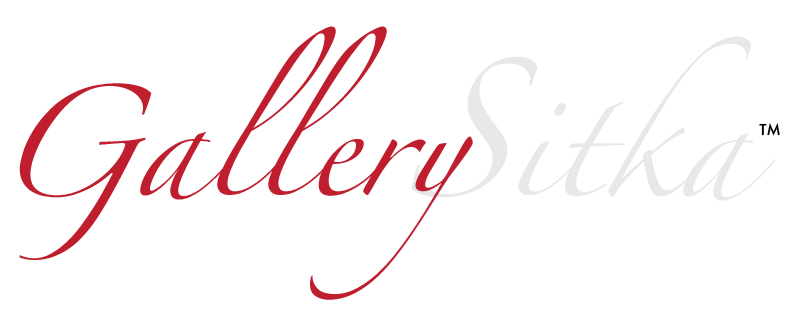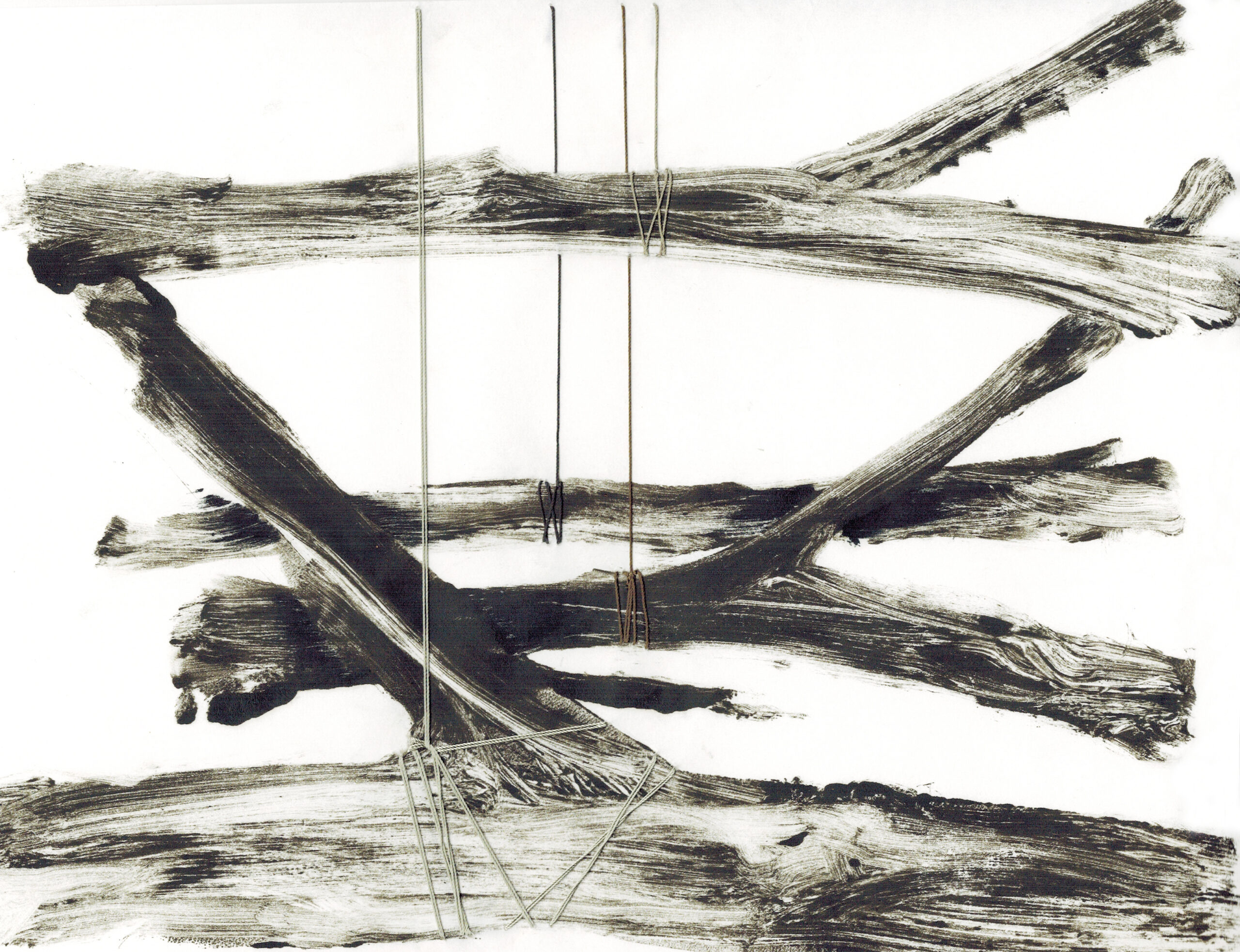PR: Inventive Printmaker Spans the Divide between Arts and Letters
FOR IMMEDIATE RELEASE
January 31, 2022
Contact: Tamar Russell Brown, Gallery Sitka — 978.425.6290
Inventive Printmaker Spans the Divide between Arts and Letters,
Combining Stark Images and Thoughtful Poetry
“Almost all of my artwork begins with a poem,” says H.M. Sprague. “The words come first.” This approach makes for artwork that appeals to our sense of visual beauty while also appealing to the intellect—to ideas, which are ordinarily expressed in words. Such a combination of views is rare in the world of fine art.
Yet the artist is ready to celebrate that way of looking at life in this departure from earlier work as an illustrative woodcut printmaker. After attending Parsons School of Design in New York City, Sprague pursued a long and fruitful career in fashion. The artist now seeks to transition into a new phase, communicating ideas in new, adventurous ways and “meditating in ink and paper about the relationships we keep with ourselves.”
Many of the pieces in this collection of Sprague’s new work express this duality of views in ways other than in the visual/verbal combination. Much of the work is, in a sense, representational and abstract at the same time. The dry, severed tree branches appear to represent lost members of an old tree. They are shorn of their bark and are defiantly presented in black-and-white. The images of the branches, in Sprague’s view, are “a form of calligraphy.” These jagged, complex shapes are indeed reminiscent of letters and words rendered in black ink on white paper. Yet because we immediately see the branches as products of the natural world, we also see them as substantial objects in their own right. They have a solid, almost stony, appearance. But they are assembled in configurations that one certainly would never see on a messy forest floor. They communicate ideas that happen to be made of the refuse we might see strewn about in the woods. Even so, those ideas originate not in nature but in the mind of the artist.
In “Tangled,” for example, the branches are held up off the ground by rope or cord. What exactly holds up the branches we cannot say since the cord disappears out of the top of the rectangular image. The branches hang very neatly, all parallel to the ground, which is also outside our view, disappearing out of the bottom of the image. Some human being has happened along and made quite a precise structure out of the “unspoiled” beauty and grandeur of the branches, but using the manufactured tool of the rope. Are we witnessing a state of nature here or the execution of some plan, some earnest thought that is trying to impose a logical order on the chaos of nature? We seem to be in both these worlds at once.
“Suspension” takes us a step further into the world of the human planner. Here the rope—or is it yarn?—holds up a stumpy branch with the expedient of the cord vanishing into holes in the white cardboard or wood that now serves as the background of the image. The white surface is all thought, not a perception of a natural scene. We might lazily assume that the white background of “Tangled” could be a uniform cloud covering the whole sky on a winter’s day. “Suspension” forces us to accept another step into a “manufactured” reality. Even the curled-up cord in the lower part of the image indicates not an all-encompassing sky behind the branches but a floor of sorts that holds up the subject matter itself. The stump is not just in the early stages of being caught in a net of human-made structures. Rather, it is now rudely tied up, hopelessly captured by the cord and the cardboard wall behind.
“Chair Made of Thoughts” takes the viewer even further into a world of abstractions. There is no need for tying up the branches—they almost seem to have stacked themselves up on top of each other “voluntarily,” no longer requiring as much force from any human design. The branches have been tamed and made useful for some human purpose. The chair is made both of and by thoughts, that is, by conscious effort and planning.
In our culture, this impulse to “tame” the natural world is often glorified as that which distinguishes human civilization from its setting on a “wild” planet Earth. Human society is thought to be “outside” of the natural world. This dichotomy is reflected in the title. It is remarkable how closely the words of the title match the image. Each branch is a separate thought, reaching out as far as possible into the world. Rather sadly, however, the reaching out has got to stop at some point, perhaps when the thoughts have finished creating their useful, practical application and do not need to grow any further.
What looks like the remains of a knot in a branch—or rather a place where one large branch broke off into two slimmer ones—is the subject matter of “Exuberant Heart.” Here representation and abstraction are very intimately joined. The knot positively looks like a human heart, even sporting a powerful aorta, the main artery leading out of the heart to all the outer regions of the body. The aorta here is the wide artery on the viewer’s right, probably, while an even more “exuberant” blood vessel on the viewer’s left resembles a hand and an arm reaching up joyfully toward the sky. The artist may be expressing a sentiment honoring the unity of nature herself, which seems to be able to see surprising similarities between two worlds as distinct as the plant kingdom, on the one hand, and the animal kingdom on the other.
The sturdy branches of “Spiral” are held up (just barely) by a thin, fragile strand of thread. The artist-poet asks: “will we / spiral down the / abyss / clutching at dark / experience /.” Hardly a reassuring vision. Actually, a terrifying one. But, true to the dualistic method, Sprague creates a starkly different image to answer the first one: “or [will we] climb steep / lessons / to another level /.” Certainly, climbing and learning and reaching “another level” is a more admirable fate than spiraling down the abyss. But at the same time, it’s not exactly more comforting. The poet’s future seems to be quite daunting and difficult either way.
Sprague has already achieved renown among printmakers, winning a spot at the International Mini Print Exhibition in Ithaca, N.Y., and having work featured in The HAND magazine. Now based in Boston, Mass., Sprague was set on a path toward artistic expression by parents who surrounded themselves with other artists. This creative community was a rich and rewarding one for Sprague, who grew up on Martha’s Vineyard learning so much as a child from these adult friends and associates.
This exposition will be available for viewing online, beginning Friday, Feb. 18, 2022.
The reception will be Friday, Feb. 18 from 4:30 – 6:30 at Gallery Sitka, 2 Shaker Rd., D101, Shirley, MA 01464.

